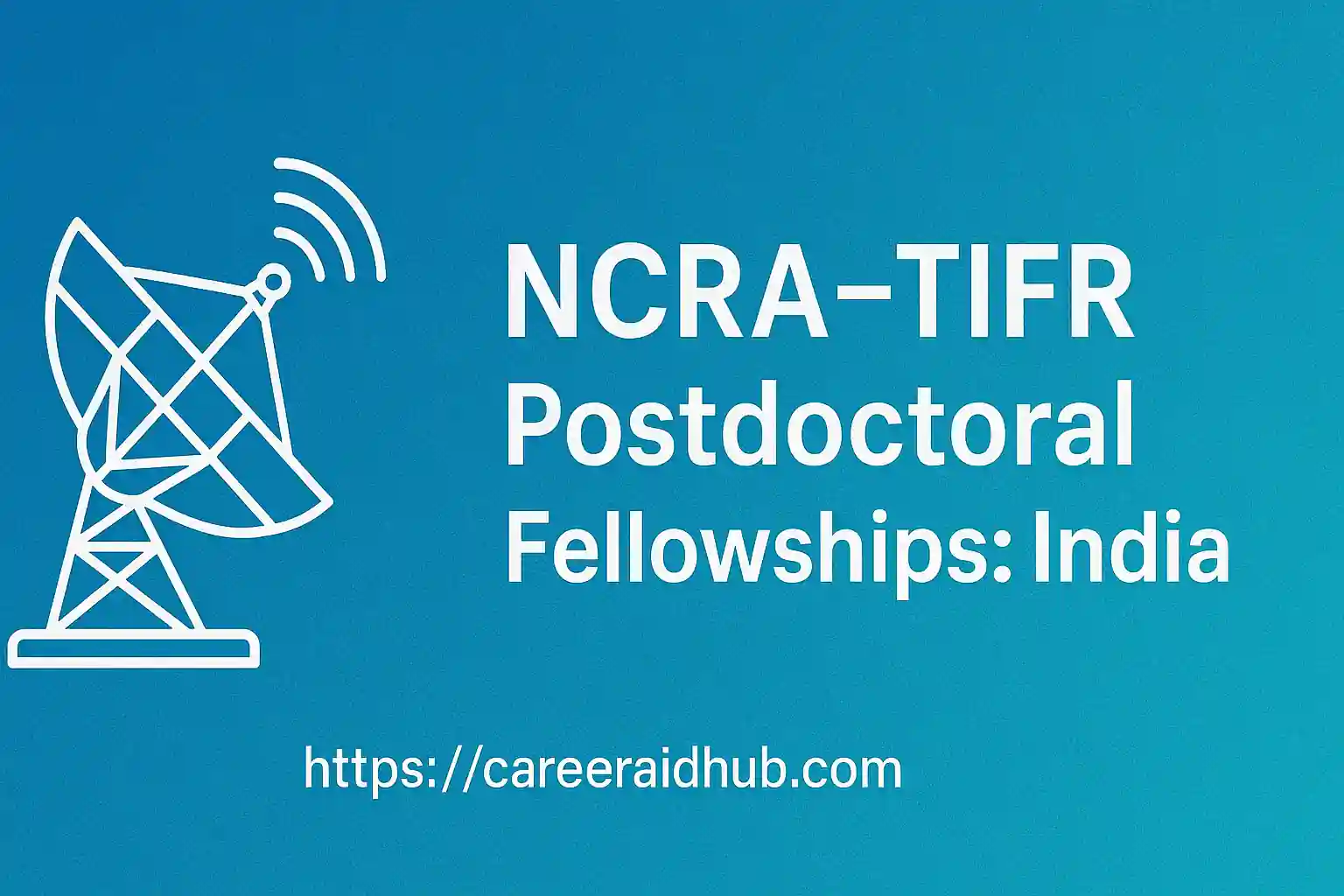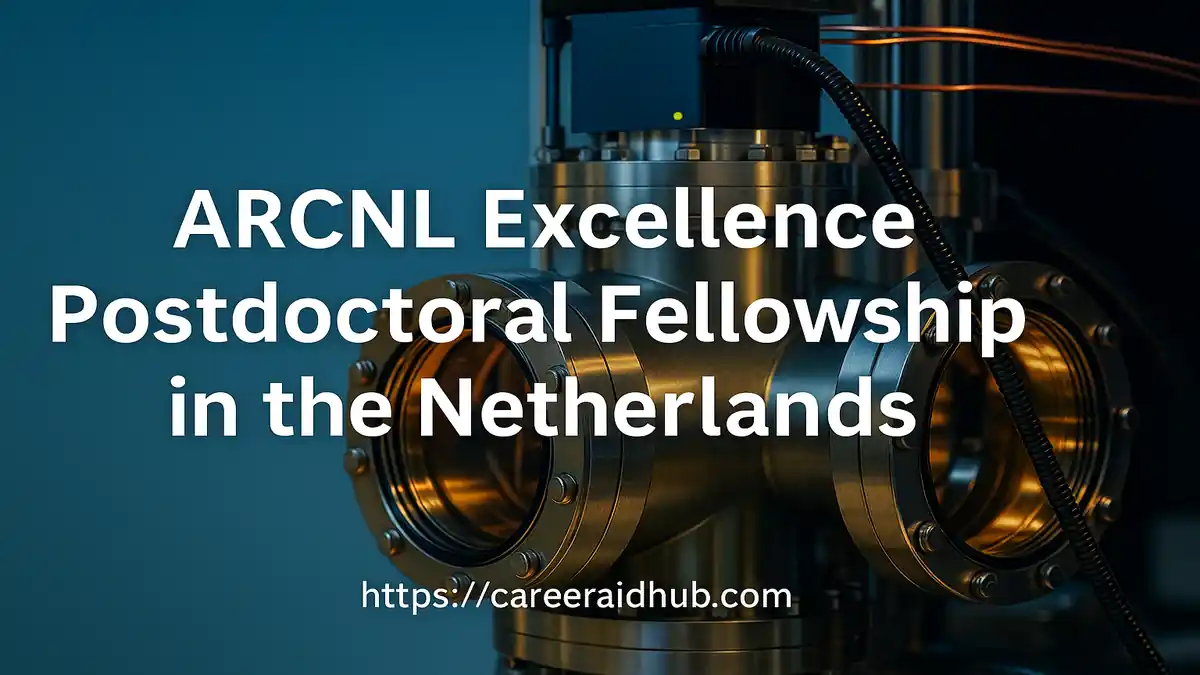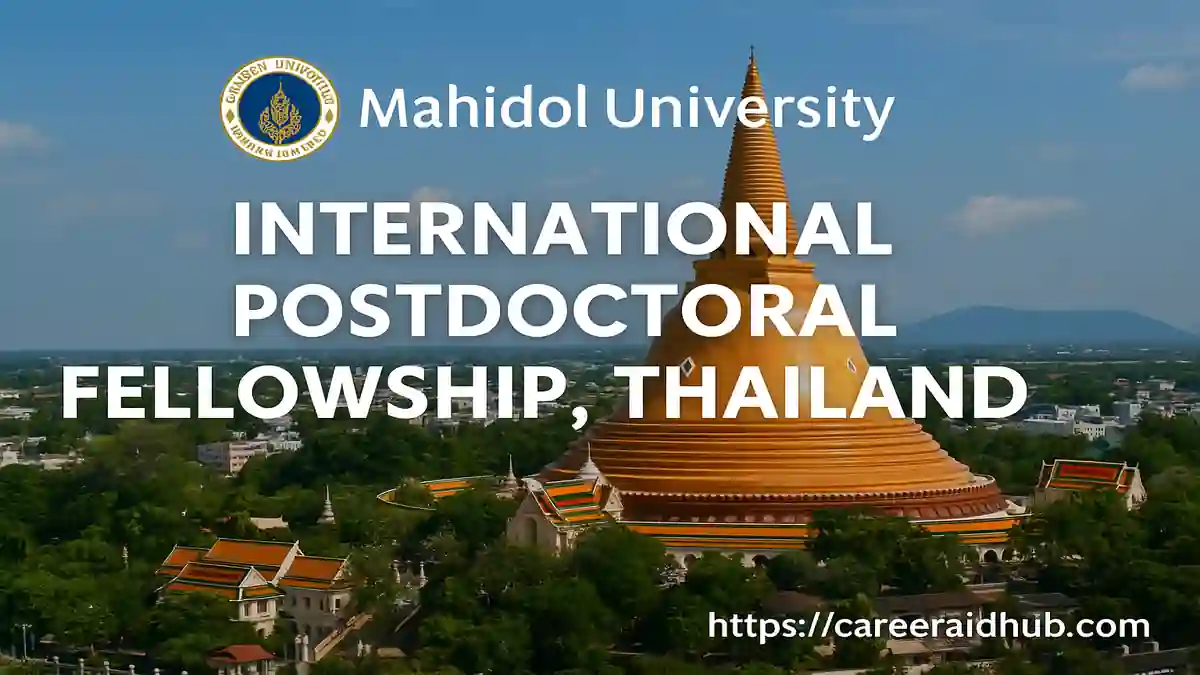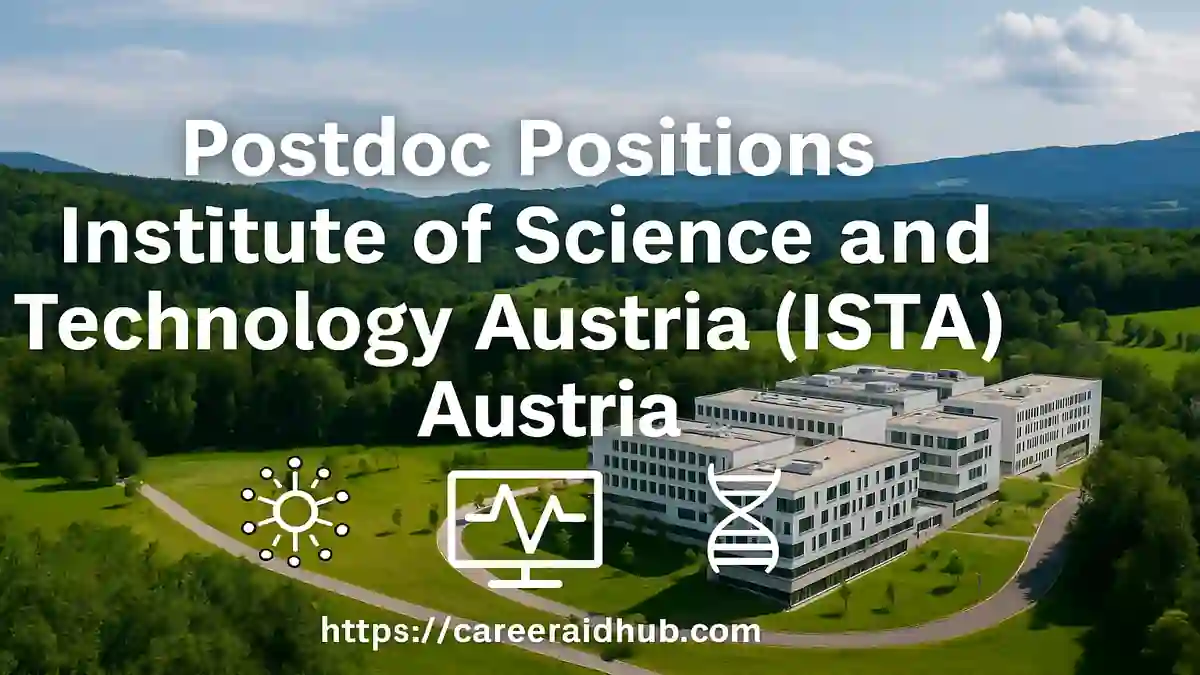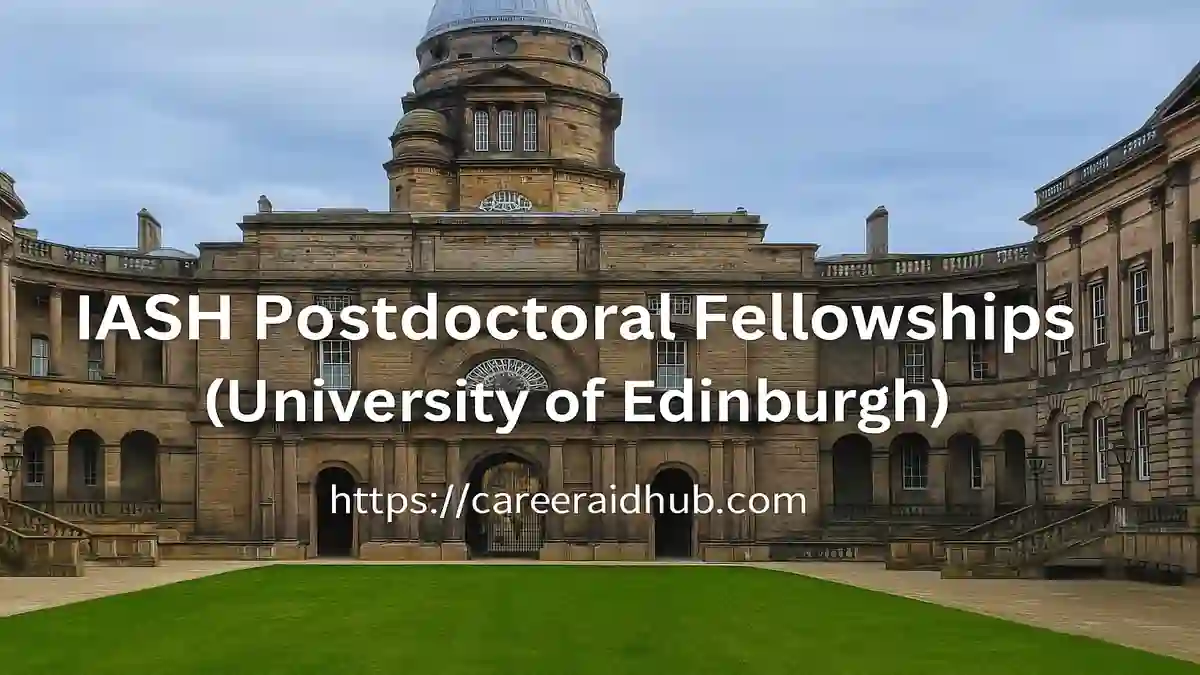NCRA–TIFR Postdoctoral Fellowships: A Gateway to Cutting-Edge Astrophysics Research in India
Why Choose NCRA–TIFR for Postdoctoral Research?
The National Centre for Radio Astrophysics (NCRA), part of the Tata Institute of Fundamental Research (TIFR), stands as a leading hub for radio astronomy in India. Located in Pune, NCRA manages the Giant Metrewave Radio Telescope (GMRT), an internationally acclaimed facility known for its contributions to low-frequency radio astronomy.
Postdoctoral fellows at NCRA gain direct access to this high-tech infrastructure, enabling them to pursue groundbreaking research alongside experienced mentors. The program fosters interdisciplinary collaboration, both within India and with global institutions, promoting a truly international research experience.
This fellowship is more than financial assistance; it is a stepping stone into impactful academic careers in space sciences and radio-based observational domains.
The NCRA–TIFR Postdoctoral Fellowship is one of India’s most distinguished opportunities in astrophysics. It provides early-career scientists with full research support, direct access to the GMRT, and a vibrant academic environment in Pune. A perfect path for researchers aiming to excel in observational and theoretical astrophysics.
Program Highlights
Host Institution: National Centre for Radio Astrophysics (NCRA), TIFR, Pune
Location: Pune, Maharashtra, India
Duration: 2–3 years, extendable upon review of performance and research goals
Support: Monthly stipend, dedicated access to GMRT, research grant assistance, and professional mentorship
Eligibility Criteria
The fellowship targets highly motivated researchers with relevant
-
-
Possession of a Ph.D. in astronomy, astrophysics, physics, or an allied field
-
Candidates in the final stages of their doctoral research may also be considered
-
A strong academic and research portfolio demonstrating potential for impactful work
-
Applications are welcomed from both domestic and international scholars who align with NCRA’s scientific focus and show promise for independent research contributions.
Research Areas Covered
1. Radio Astronomy
Explore cosmic radio sources using GMRT and other radio observatories. Topics may include pulsar astronomy, galactic structure, the interstellar medium, and cosmic magnetism.
2. Theoretical Astrophysics
Delve into astrophysical modeling, covering black hole physics, gravitational wave propagation, cosmic evolution, and high-energy astrophysical processes.
3. Computational Astrophysics
Engage in simulation-based studies of astrophysical systems using advanced computational tools. Includes development of pipelines, algorithmic modeling, and big data analysis.
4. Observational Astronomy
Conduct real-time astronomical observations and participate in large-scale data collection and analysis across multi-frequency and multi-wavelength platforms.
Together, these domains offer a rich and diverse ecosystem for research and discovery, preparing fellows
Application Deadlines
The fellowship operates in two application cycles every year:
-
-
Summer Round: Deadline – June (We will update soon)
-
Winter Round: Deadline – December (We will update soon)
-
These consistent cycles allow candidates to prepare well in advance and time their applications based on academic milestones or project completion.
Timeline for Applications
Use the table below as a planning tool for submitting a competitive application:
| Activity | Summer Round | Winter Round |
|---|---|---|
| Call for Applications Open | April | October |
| Document Preparation & Review | April–May | October–November |
| Final Submission Deadline | June | December |
| Evaluation and Shortlisting | July–August | January–February |
| Fellowship Commencement (Tentative) | September–October | March–April |
Applicants are encouraged to begin document preparation and communication with referees at least 2–3 months before the stated deadline.
Application Process: Step-by-Step Guide
Step 1: Prepare Application Materials
-
-
A comprehensive CV detailing academic qualifications, publications, and research experience
-
Statement of Research Interests and Future Goals
-
Letters of Recommendation (typically two or more)
-
A targeted Research Proposal aligned with NCRA’s
core themes
-
Step 2: Submit Online Application
All materials must be uploaded via the official NCRA portal. Follow formatting and file requirements carefully to avoid disqualification.
Step 3: Review and Selection
An internal committee of domain experts assesses applications for academic quality, feasibility, and relevance. Selected candidates may be invited for virtual or in-person discussions. Final offers are communicated shortly after review completion.
Benefits of the Fellowship
This program provides comprehensive support to foster academic excellence:
-
-
Monthly Fellowship: Competitive stipend covering living expenses in Pune
-
Access to GMRT: Exclusive use of one of the most powerful low-frequency radio telescopes globally
-
Institutional Resources: Dedicated office space, computing facilities, and library access
-
Scholarly Development: Participation in national conferences, workshops, and interdisciplinary seminars
-
Research Visibility: Assistance with publishing, project presentations, and post-fellowship placements
-
Why Pune?
Pune is a well-established educational and research hub in India. It hosts several leading universities and institutes, creating a collaborative academic environment. The city combines affordable living with cultural richness, pleasant weather, and close proximity to major urban centers.
For researchers, Pune offers the unique advantage of intellectual vibrancy combined with infrastructural convenience.
Future Prospects
Completing the NCRA–TIFR postdoctoral fellowship equips scholars with:
-
Eligibility for competitive faculty positions in premier Indian and international institutes
-
Opportunities to lead or join major international astrophysics collaborations
-
Strong credentials for research proposals and grant applications globally
-
The fellowship provides a launchpad into long-term academic careers, fostering leadership and innovation in astrophysical sciences.
Final Thoughts
The NCRA–TIFR Postdoctoral Fellowship serves as a critical bridge between doctoral study and independent research careers. It nurtures scientific creativity, fosters high-quality research, and reinforces India’s global presence in astrophysics.
Researchers passionate about contributing to cosmic exploration through radio astronomy and theoretical modeling should consider applying to this program. With direct access to state-of-the-art facilities and support from an experienced academic network, the fellowship offers everything a postdoctoral scholar needs to thrive.
Quick Overview
Here is the fully formatted metadata feature table and 10 SEO-optimized FAQs for the NCRA–TIFR Postdoctoral Fellowships, carefully rewritten for originality, AdSense compliance, and enhanced search visibility.
🔹 Feature Table
| Feature | Details |
|---|---|
| Program Name | NCRA–TIFR Postdoctoral Fellowships |
| Host Country / Region | India (Pune, Maharashtra) |
| Funded By | National Centre for Radio Astrophysics (NCRA), Tata Institute of Fundamental Research (TIFR) |
| Duration | 2 to 3 years (extendable) |
| Study Mode | Full-time, On-site |
| Eligibility | Ph.D. holders or candidates nearing completion in physics, astrophysics, or related fields |
| Financial Support | Monthly stipend, access to GMRT, research funding, infrastructure |
| Fields of Study | Radio Astronomy, Theoretical Astrophysics, Computational Astrophysics, Observational Astronomy |
| Application Deadline | June (Summer round) and December (Winter round) — We will update soon |
| Official Website | Click here |
Next Review Suggested: November (ahead of the Winter Round deadline)
References:
FAQs
The NCRA–TIFR Postdoctoral Fellowship supports advanced research in astrophysics and radio astronomy with access to the GMRT in Pune.
Ph.D. holders or candidates nearing completion in physics, astrophysics, or related fields are eligible to apply.
The standard duration is 2 to 3 years, with a possibility of extension based on research performance.
Applications are accepted twice yearly—once in the summer and again in the winter.
Selected fellows receive a competitive stipend, research funding, and institutional support including GMRT access.
Yes, the fellowship is open to candidates from India and abroad who meet eligibility and research alignment criteria.
Submit your application through the official NCRA portal along with a CV, research proposal, and reference letters.
The program supports research in radio astronomy, theoretical astrophysics, computational models, and observational science.
Fellows have full access to the GMRT, computing resources, mentorship, office space, and academic networking opportunities.
Fellowships typically start around September (for Summer round) and March (for Winter round), subject to selection and onboarding timelines.
Premium Mentorship for a Stronger Application
- Premium Mentorship: personalised 1:1 guidance for this and similar opportunities
- In-depth review of your CV, academic profile, and key statements
- Aligned with international selection criteria so your profile matches what panels expect
- Stronger, more compelling narrative for highly competitive calls
- Step-by-step support from opportunity mapping to final submission (fee-based)

